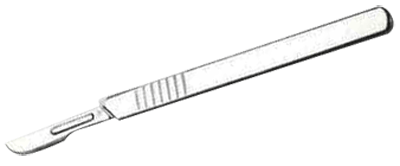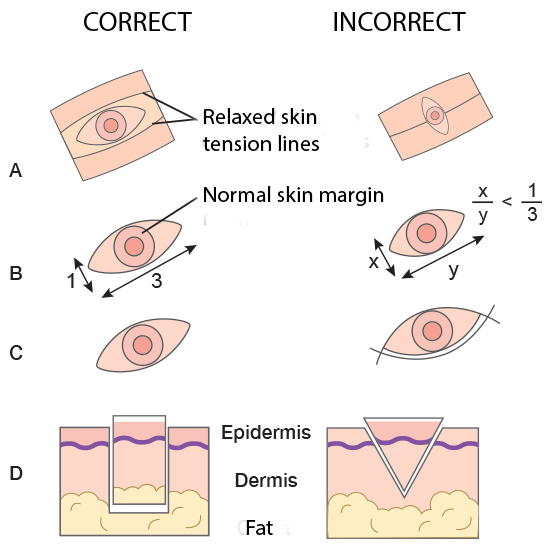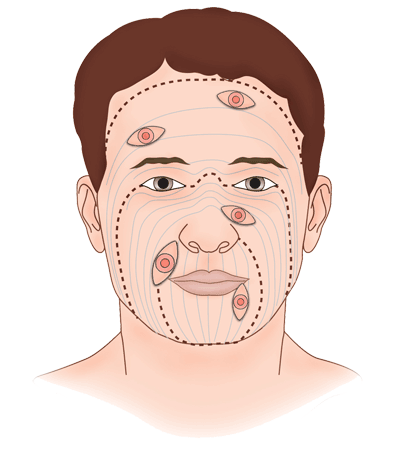Introduction
Skin biopsy
The choice of which type to use depends on the suspected pathology.1. Shave biopsy: A scalpel or a razor blade (#10 or #15) is used to scrape the surface of the skin. Usually for elevated lesions. No stitches are needed. Rapid hemostasis with Monsel's solution, aluminum chloride solution or electrodesiccation.
 2. Punch biopsy: A tubular punch (diameter usually 4 mm) is inserted into deep dermal or subcutaneous tissue to obtain a specimen, which is snipped off at its base. One or two stitches may be used to close it.
2. Punch biopsy: A tubular punch (diameter usually 4 mm) is inserted into deep dermal or subcutaneous tissue to obtain a specimen, which is snipped off at its base. One or two stitches may be used to close it.3. Biopsia incisional (“cuña”): Refers to removal of a larger and generally deeper ellipse of skin, including the subcutaneous fat layer, using a scalpel blade. It helps in the diagnosis and monitoring of skin neoplasms, scleroderma, paniculitis and pyoderma gangrenosum. Stitches secure the layers of tissue and close the incision.
4. Excision biopsy: Elliptical excision, refers to complete removal of a skin lesion, including the subcutaneous fat layer, such as a skin cancer in which a margin of surrounding skin is taken to improve chances of complete removal. Stitches secure the layers of tissue and close the incision.
5. Curettage: Useful for hyperkeratotic lesions, such as a seborrhoeic keratosis, warts and basal cell carcinoma. Often requiring cauterization.
6. Sección (tijeras): papilomas cutáneos, verrugas filiformes


A skin biopsy is often used to diagnose or rule out certain skin conditions and diseases, such as:
1. Skin cancer.
2. Blistering (bullous) disorders (with simultaneous immunofluorescence).
3. Autoimmune diseases that affect connective tissue: lupus and dermatomyositis.
4. Skin disorders, when a clinical examination isn't enough to diagnose them.